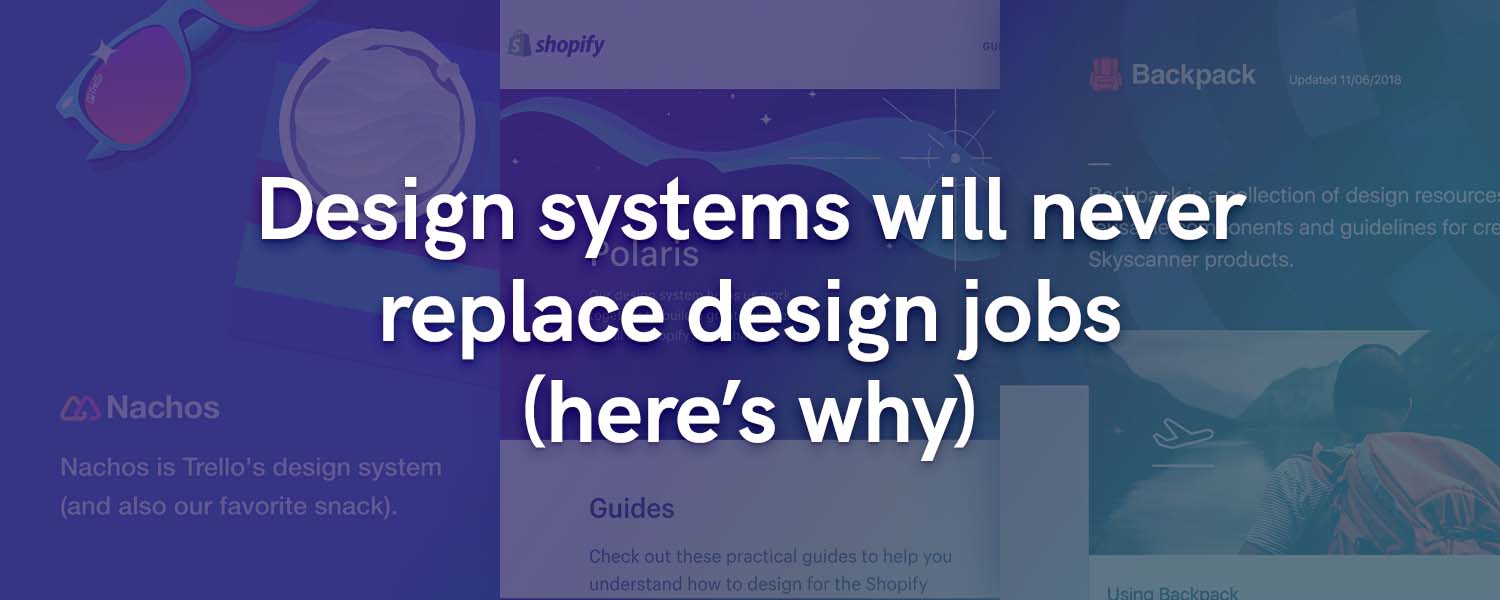Design systems are collections of principles, rules and constraints made to bring teams together around a singular visual language and above all maintain consistency throughout.
As such, design systems fast-track the design process, lower design debt and rally teams behind a common goal.
Introduction
In a world ruled by best practices, top tech companies have disclosed to the world their design conventions. Some of these companies include Google’s Material Design, Apple’s Human Interface Guidelines, Yelp’s Style guide and many others.
Some of the major components of a design system include:
- A visual pattern library or style guidelines.
- Tone and voice guidelines.
- Design tools such as sketch libraries.
- Animation language documentation.
- Technical documentation.
Although they are incredible toolboxes and act as a single source of truth, design systems should never be misconstrued as a replacement for the designer’s job. Design systems were made to clear the clutter and help designers by enabling them to place their focus on more important aspects of a project.
With these systems in play, the role of the designer expands to areas where machines haven’t reached yet. Some of these aspects include:
- Spending more resources on researching, studying and interviewing users.
- Getting ideas and inspiration for new concepts while exploring and testing new products or features.
- Brainstorming with engineers to understand their limitations so that the handoff process is as smooth as possible.
- Figuring out how new features would impact the entire system on a holistic scale.
- Maintaining the ever-evolving design system so that there can be user experience consistency throughout.
You might be wondering, what are some of the benefits of having a well-maintained design system in place?
Design debt reduction
A user interface design gets as depreciated in time as objects in real life. This happens mostly because how design trends rise and fall, but also due to business decisions and so on.
With time, especially for constantly expanding organizations, new features are added, and the older ones get discarded or superseded. With a well-planned design system in play, updates are rolled out faster to grow the product and keep it relevant.
Eliminating inconsistencies
Design inconsistencies are usually caused by human error. However, a design system eliminates most of them quite effectively. As a matter of fact, these systems help teams identify the most commonly used elements and shed light on the most important ones.
As such, when working on large projects, design systems bring structure to an otherwise chaotic place. Also, since any system created will need updating and maintenance, a proper one will ensure that the user gets a consistent experience over time, even if features change.
Speeding up the design processes
Our natural human instinct is to automate redundant tasks that can optimize certain processes and make our lives easier. When the designers in an organization have a well-kempt library of resources at their disposal, things become a bit smoother for them. This means that there will be a faster turnaround for products without compromising their quality.
More focus on usability and user experience
A designer has many responsibilities that cannot be simply resolved by taking the “design system” magic pill. Instead, a well-planned design system allows designers to focus on some of the most important aspects of product development, such as usability and refining the product’s user experience.
Most people fear automation because it usually leads to layoffs. In respect to design systems, I don’t think this is necessarily the case. Although this is usually a fact, these new disruptions also create new opportunities for maintenance and improvements.
Conclusion
The designer job is here to stay. Although design systems make a designer’s job much more efficient, they cannot be put in the pilot’s seat when it comes to creating an authentic design process.
Although some “experts” in the field say that the designer’s job is quickly becoming extinct, the creativity and idea diversity brought by people is unmatched. Without the designer’s firm hand behind the scenes of a design system, it quickly falters and becomes obsolete.
Technology is meant to complement. Building large systems can become a nightmare for most designers, but with the backing of a design system, the project achieves more balance and consistency throughout.

🤔 What do you think?